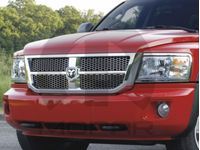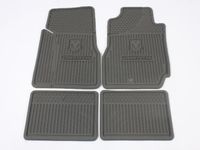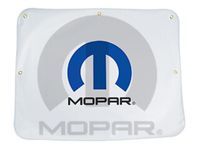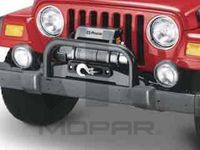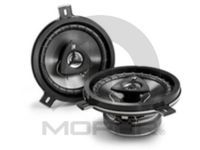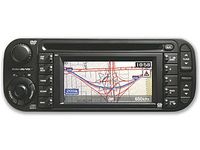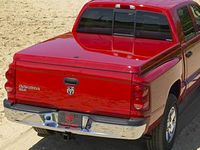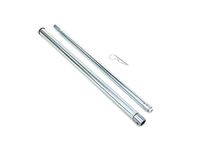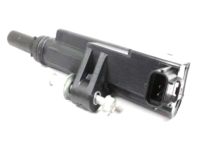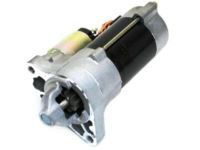
Why choose MoparPartsGiant
- Optimal Shopping Experience
Want to buy parts for your Dodge Dakota? Look no further than MoparPartsGiant.com, the best place for Dodge Dakota genuine parts. For years, all of our Dodge Dakota auto parts and accessories have been expedited directly from dedicated dealers and backed by the manufacturer's warranty, so buying from MoparPartsGiant.com is always risk-free.
- Dedicated Customer Service
Our first-class customer service team is committed to providing you with the best assistance possible. Dedicated representatives are standing by to assist you by email, live chat, or phone. Every effort is made to ensure your order for OEM Dodge Dakota parts arrives fast no matter your location in the nation, so your vehicle is up and running and back on the road.
- Unbeatable Prices
What makes us the best online source for Dodge Dakota parts and Dodge Dakota truck parts? Our goal is to offer the lowest prices. You get giant savings shopping with MoparPartsGiant.com. With a complete Dodge Dakota parts catalog, we cover a full selection of affordable OEM Dodge Dakota parts and pickup parts with a huge inventory.
Popular Genuine Dodge Dakota Parts
- Engine Parts View More >
- Electrical Parts View More >
- Fuel Parts View More >
- Body - Sheet Metal Except Doors Parts View More >
- Cooling Parts View More >
- Steering Parts View More >
- Interior Trim Parts View More >
- Brakes Parts View More >
- Transmission Parts View More >
- Suspension & Drive Parts View More >
- Emission Systems Parts View More >
- Doors & Related Parts View More >
Shop Genuine Dodge Dakota Parts with MoparPartsGiant.com
The Dodge Dakota is a mid-size pickup truck that was initially introduced under the Dodge brand in late 1986, lasting until 2010, and later produced under the Ram brand.The first-generation Dakota, produced from 1986 to 1996, offered four- and six-cylinder engines with a choice between a five-speed manual or three-speed automatic transmission, and all-wheel drive was only available with the V6 engine. The Dakota gained recognition as the first pickup with rack-and-pinion steering and for introducing the V8-powered Shelby Dakota in 1988. A notable upgrade in 1991 included a redesigned grille and hood for better access to the optional 170-horsepower V8 engine and the inclusion of halogen headlamps. In 1997, the Dakota underwent significant changes, adopting the larger Ram model's trailer design and switching to rack-and-pinion steering on four-wheel-drive models. It was also the year when the production of the Dakota R1 began in Brazil, featuring a four-cylinder base engine and 2.5-liter VMI and V8 turbodiesel engines. As of 2002, most Dakotas were equipped with more powerful V6 or V8 engines. Throughout its production, the Dakota was known for its blend of size and power, appealing to those who needed a truck smaller than a full-size pickup but with substantial hauling and towing capabilities.
Often used for heavy-duty hauling and transport, the Dodge Dakota can face certain issues over time due to challenging road conditions. Brake system problems are the first to look out for; Dakota owners report quick brake fluid leakage when brakes are applied, Brake Warning Light illumination, and noticeable corrosion on brake lines. Some also mention issues with the parking brake's functionality and activation of the Parking Brake Light, implying possible damage to the brake line or parking brake cable. The second major issue involves the engine, particularly related to oil. Signs of this problem include the Engine Oil Light turning on, oil drips from the filter, engine overheating, dropped oil pressure resulting in poor engine performance, metallic sounds, a burnt oil odor, and dirty smoke from the exhaust pipe. These symptoms could indicate a clogged oil filter. Additionally, for the longevity of your Dakota and your safety, it's important to not overlook certain components such as the headlight. This key element may not be top of mind until needed in darkness, but it's essential for safe driving and should be included in regular maintenance.
Genuine parts are first-rate in terms of quality and functionality. Manufactured directly by Dodge, they undergo rigorous testing and are made from dependable materials to ensure long-lasting durability and dependability. Looking for affordable OEM Dodge Dakota parts, like Exhaust, Air Conditioners & Heater? Explore our comprehensive catalogue of genuine Dodge Dakota parts, such as Wiper & Washers And Cylinder & Keys. All our parts are covered by the manufacturer's warranty. Plus, our straightforward return policy and speedy delivery service ensure an unparalleled shopping experience. We look forward to your visit!
Dodge Dakota Parts Questions & Answers
- Q: How to Remove and Install the MAP Sensor on Dodge Dakota?A: Disconnect the cable from the negative battery terminal. For 3.7L V6 and 4.7L V8 engines, disconnect the electrical connector from the MAP sensor and remove the two mounting screws. For HEMI engines, disconnect the electrical connector by sliding the release lock and depressing the release tab. Inspect and replace the 0-ring if damaged. To install, place it in position, insert it into the mounting hole, and turn it clockwise.
- Q: How to Check the Ignition Coils for Dodge Dakota?A: To check the 3.7L V6 and 4.7L V8 engines' ignition coils, begin by removing the coil and cleaning the outer case. For the HEMI engine, clean the outer case, primary terminals, and high-tension terminal. Check the primary resistance and replace it if not within range. To replace, remove the air intake duct, resonator box, and disconnect the electrical connector, remove the coil mounting bolts. To reinstall, switch the removal steps going from the final step to the beginning step.
- Q: How to Check Starting Circuit and Starter Motor on Dodge Dakota?A: Check the battery cable clamps, cables, battery, starter motor wiring and connections, mounting bolts, fuses, ignition switch circuit, starter relay, and TR sensor. If voltage is not available to the starter solenoid, check the fuses and starter relay. If the starter turns over slowly, check the starter cranking voltage and current draw. Remove and check the starter motor assembly on the bench. Install jumper cables from a test battery to the starter and observe the solenoid plunger, shift lever, and overrunning clutch. If the solenoid plunger extends and rotates the pinion drive, the starter assembly is operating properly.



















































